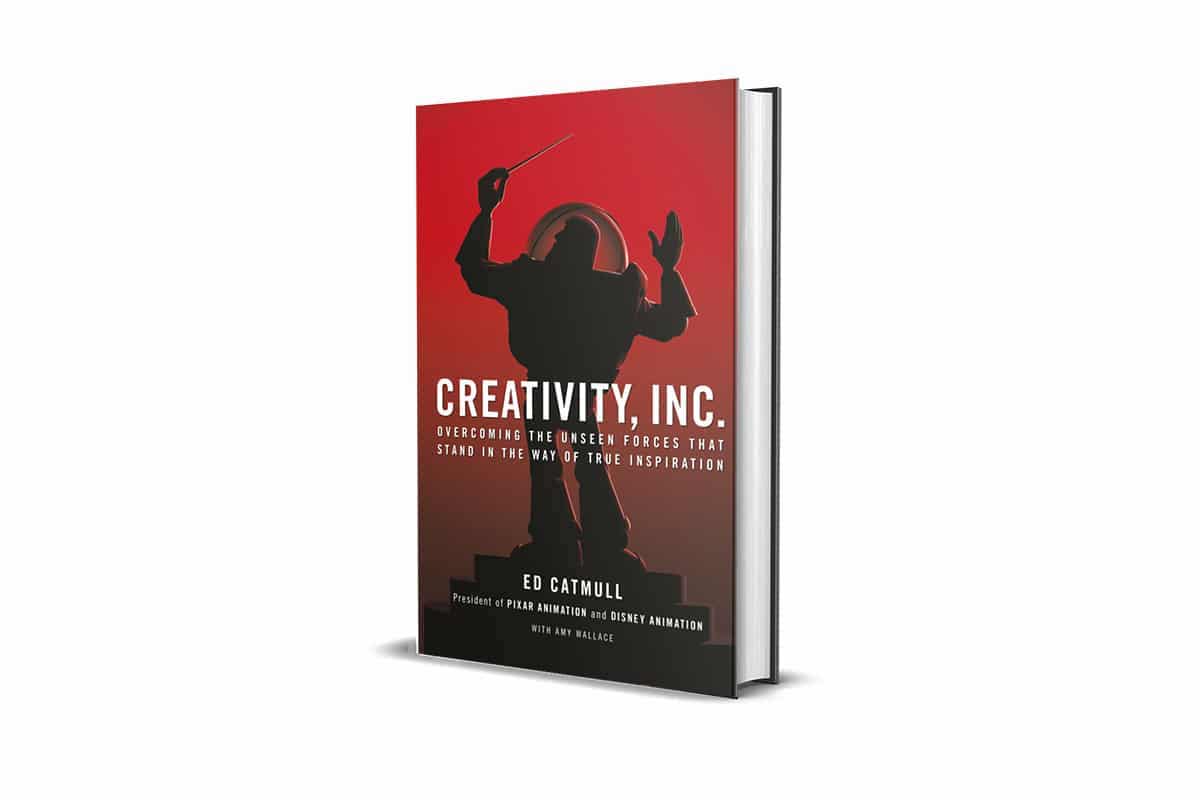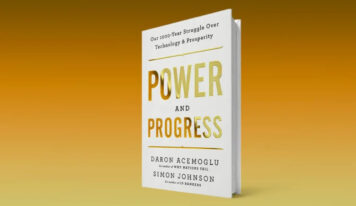Overcoming the invisible forces that stand in the way of true inspiration, by Ed Catmull with Amy Wallace
Central Ideas:
1 – Pixar, grown up within Lucasfilm, needed independence to achieve its goals in computer animation. Steve Jobs was sought out. After intense negotiations, he joined the group. Steve paid $5 million to take Pixar away from Lucasfilm and gave another $3 million to run the firm.
2 – It is worth repeating: getting the right team is the condition to get good ideas. It is easy to say you want talented people, but the way in which they interact with each other is the key.
3 – The Brain Bank, which meets every two or three months to evaluate each film being produced, is Pixar’s main system for direct conversations. The premise is simple: get smart, passionate people together in a room to identify and solve problems.
4 – Daily meetings are part of Pixar’s culture, not only because of what they accomplish – constructive feedback halfway through – but also because of the way they do it. Participants have learned to leave their egos in the lobby – they are about to show incomplete work to their director and colleagues.
5 – Managers of creative companies should never forget to ask themselves: How can we use the intelligence of our people? To this end, Observation Day was created, which is based on the idea that fixing things is an ongoing and incremental process, with the freedom to say what you think.
About the authors:
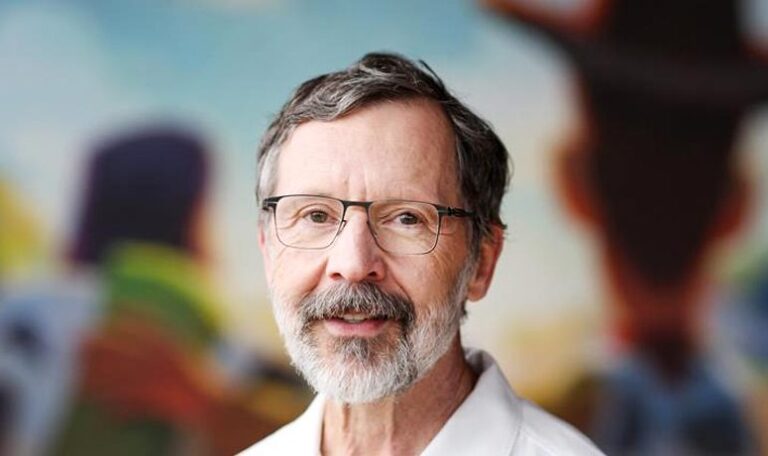
Ed Catmull (pictured) is co-founder of Pixar Animation Studios and president of Pixar Animation and Disney Animation. He is a five-time Academy Award winner, including the Gordon E. Sawyer Award for lifetime achievement in computer graphics.
Amy Wallace is a journalist with publications in such media as GQ, The New Yorker, Wired, The New York Times Magazine, and the Los Angeles Times, where she currently works.
Introduction
On a personal level, Toy Story represented the realization of a goal I had been pursuing for more than two decades and dreaming of since I was a boy. Having been born in the 1950s, I really wanted to be an animator for Disney, but I had no idea how to get there. Today I realize that I chose computer graphics – at that time a new field – as the means to pursue that dream. If I couldn’t do animation by hand, there had to be another way. In college, I had quietly set the goal of making the first computer-animated feature film and worked tirelessly for twenty years to accomplish it.
The thesis of this book is that there are many obstacles to creativity, but there are also active steps we can take to protect the creative process. In the next few pages I will set out many of the measures we take at Pixar, but for me, the most effective mechanisms are those that deal with uncertainty, instability, lack of candor, and things we can’t see. I believe that the best managers recognize and make room for what they don’t know – not only because humility is a virtue, but because until one adopts this attitude of mind, the most important breakthroughs cannot happen. I believe that managers should loosen controls, not tighten them. They must accept risks, they must trust the people they work with, and they must fight to pave the way for them. Also, successful leaders accept the reality that their models may be wrong or incomplete. Only when we admit not knowing something can we learn.
PART I – GETTING STARTED
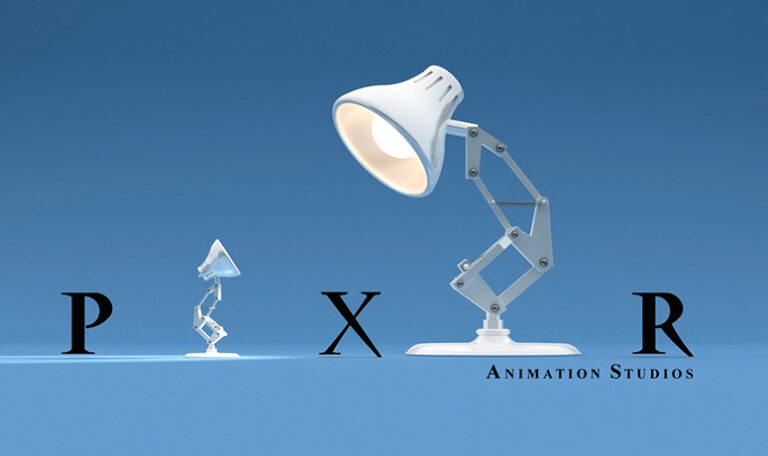
Chapter 1 – Animated
Four years later, in 1969, I graduated from the University of Utah with two degrees, one in physics and one in the emerging field of computer science. When I applied for graduate school, my intention was to learn how to create computer language. But soon after I enrolled, at the same university, I met a man who would encourage me to change course: Ivan Sutherland, one of the pioneers of interactive computer graphics.
The field of computer graphics – in essence, the creation of digital images from numbers or data that can be manipulated by a machine – was still in its infancy, but Professor Sutherland was already a legend. Early in his career, he had developed the Sketch-pad, an ingenious computer program that allowed figures to be drawn, copied, moved, rotated, or changed in size without losing their basic properties. In 1968 he participated in the creation of what may be the first virtual reality display system used in the head.
ARPA (Advanced Research Projects Agency) had been created in response to Sputnik, and one of its most important organizational principles was that collaboration could lead to excellence. In fact, one of ARPA’s proudest accomplishments was connecting universities with something they called the “ARPANET,” which evolved into the Internet. The first four nodes of the ARPANET were at Stanford Research Institute, UCLA, UC Santa Barbara, and the University of Utah; so I was in a privileged place to observe that great experiment and what I saw had a profound influence on me.
Chapter 2 – Pixar is born
I joined Lucasfilm, which was located in Marin County. And then I put Alvy Ray Smith in charge of the computer graphics group, which was initially devoted to creating a digital approach to blue-screen matting (chroma key) – the process by which an image (e.g. a man on a surfboard) can be inserted into a separate image (say, a thirty-foot wave). Before digital technology, this effect was accomplished on film using sophisticated optical devices, and the special effects wizards of the time had no interest in leaving this painstaking method behind. Our task was to convince them otherwise. Alvy’s team set about designing a highly specialized computer that had the resolution and processing power to scan films, combine special effects images with live-action scenes, and record the end result on film. It took us about four years, but our engineers built the device, which was called the Pixar Image Computer.
After Star Wars, Lucasfilm was attracting big names. But the most surprising visit was that of a group of Disney animators in mid-1983. Among them was John Lasseter, who soon after lost his job at Disney, then came to Pixar and became one of the leaders of the group.
Pixar needed independence to achieve its objectives, its goals in computer animation. Steve Jobs was sought out. After intensive negotiations, he joined our group. An essential alliance for Pixar’s business, not only for the capital but also for his undeniable leadership.
In the end, Steve paid $5 million to take Pixar away from Lucasfilm – then, after the sale closed, agreed to pay another $5 million to finance the company, with 70% of the shares going to Steve and 30% to the employees.
Chapter 3 – A Defining Goal
One thing we had to discover in the early days of Pixar was the yin and yang of working with Steve. His determination to succeed and his willingness to think big often were inspiring. For example, he insisted that Alvy and I open sales offices for Pixar Image Computer across the country – a bold move that we would never have dreamed of proposing. Alvy and I felt that we were selling a sexy but highly specialized product, which meant that there was a natural limit to the size of its market. But Steve, coming from the world of consumer computers, forced us to think outside the box. To sell our machine, he reasoned, we needed to establish a national presence.
It was decades before Deming’s ideas were accepted in America. It wasn’t until the 1980s that some Silicon Valley companies, such as Hewlett Packard and Apple, began to incorporate them. But Deming’s work would make a huge impression on me and help shape my approach to managing Pixar moving forward. Although Toyota was a hierarchical organization, it was guided by a core democratic principle: you don’t have to get permission to take responsibility.
At the same time, as we struggled to finish Toy Story, the work we had started at Lucasfilm was beginning to have a noticeable impact in Hollywood. By 1991, the two biggest box office hits of the year – Beauty and the Beast and Terminator 2 – had been based heavily on technologies developed at Pixar, and the folks in Hollywood were tuning in.
Chapter 4 – Establishing Pixar’s identity
In 1997, executives from Disney came to us with a request: could we make Toy Story 2 as a direct-to-video release – that is, without releasing it in theaters? At the time, Disney’s suggestion made a lot of sense. In its history, the studio had only released one animated sequel, Bernardo and Bianca in Kangaroo Land, in the 1990s, which had been a box office failure. Since then, the direct-to-video market had become extremely lucrative, so when Disney proposed Toy Story 2 for video-only release – a niche product with less artistic pretensions – we said yes. Although we questioned the quality of most sequels made for the video market, we felt we could do better.
A few months after the project began, we called a meeting with Disney executives to sell them the idea that the direct-to-video model was not going to work for us. It was not within Pixar’s goals. We proposed a change of course and make Toy Story 2 for release in theaters. To our surprise, they readily agreed. Suddenly we were making two ambitious films at the same time – doubling overnight our production for theatrical release. This was somewhat frightening, but it was also like an affirmation of our core values. As our picture grew, I felt proud that we had insisted on quality. For me, decisions like that would guarantee our future.
In the end, we met our deadline, with our efforts on the limit – and released our third successful film. Critics said that Toy Story 2 was one of the few sequels that outperformed the original film, and the box office grossed $500 million. Everyone was sold out, but there was also a feeling that we had produced something important, that would define Pixar in the years to come.
It is worth repeating: getting the right team is the necessary condition for getting good ideas. It’s easy to say that you want talented people, but the way in which they interact with each other is the key.
PART II – PROTECTING THE NEW
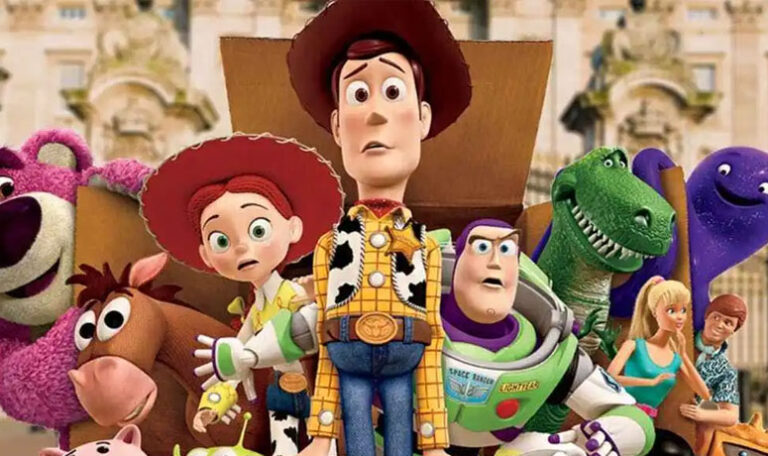
Chapter 5 – Honesty and Openness
In this chapter, we will examine the workings of one of Pixar’s vital mechanisms: the Brain Bank, on which we depend to drive us to excellence and eliminate mediocrity. The Brain Bank, which meets every two or three months to evaluate each film we are producing, is our main system for direct conversations. The premise is simple: get intelligent, passionate people together in a room, task them with identifying and solving problems, and encourage them to be honest with each other. In a sense, people forced to be honest feel freer when asked about their sincerity; they can choose to be honest or not, and when they choose to be honest, it tends to be genuine. The Brain Bank is one of Pixar’s most important traditions. It’s not perfect – sometimes its interactions only serve to highlight the difficulties of achieving sincerity – but when we get it right the results are phenomenal. The Bank sets the tone for everything we do.
There is some dispute as to when exactly the Brain Bank was born. This is because it developed organically from the rare working relationship between the five men who led and edited the production of Toy Story – John Lasseter, Andrew Stanton, Pete Docte, Lee Unkrich, and Joe Ranft. From the earliest days of Pixar, this quintet gave us a solid example of what a highly functional working group should look like.
Chapter 6 – Fear and Failure
For the most part, people don’t want to fail. But Andrew Stanton is not the majority. As I mentioned, he is known at Pixar for repeating the phrases “fail early and fail fast” and “get it wrong as fast as you can”. He thinks that failing is like learning to ride a bicycle; it is not conceivable to do it without making mistakes – without falling off a few times. “Get the lowest bike you can, put on anklets and knee pads so you’re not afraid of falling, and go for it,” he says. If you apply this way of thinking to everything new you try, you can begin to subvert the negative connotation associated with making mistakes.
Says Andrew: “You don’t tell a person who is learning to play guitar to think about where he is going to put his fingers before he strums, because he is going to play that chord only once. And if he makes a mistake, the others will follow. That’s not how you learn, right?”
How then to turn failure into something that people can face without fear?
Part of the answer is simple: if, as leaders, we can talk about our mistakes and our part ourselves, then we can make them safer for others. You don’t run away from them or pretend they don’t exist. This is why I make it a point to be open about our mistakes at Pixar because I believe they teach us something important. Being open about problems is the first step toward learning from them. My goal is not to completely eliminate fear, because fear is inevitable in situations where a lot is at stake. What I want to do is to loosen the grip. While we don’t want too many mistakes, we should think of the cost of failure as an investment in the future.

Chapter 7 – The Hungry Beast and the Ugly Baby
As you may remember, Pixar had signed a contract to develop a graphics system for Disney – the Computer Animation Production System, or CAPS, which would create and manage animation cells. We started working on CAPS when Disney was producing The Little Mermaid; so I was in a privileged place to see that the success of the film led to the expansion of the studio and the need for more film projects to justify (and fill) the growing staff. In other words, I was witness to the creation of Disney’s beast – and by “Beast” I mean any large group that needs to be fed uninterruptedly with new materials and resources in order to function.
Originality is fragile. And in its first moments in general it is far from beautiful. This is why I call the first drafts of our films “ugly babies”. They are ugly miniature versions of the adults they will become. They are ugly indeed: clumsy and not yet formed, vulnerable and incomplete. They need nurturing – in the form of time and patience for them to grow up. That means they have a hard time coexisting with the Beast.
Of course, the Beast does not only flourish in animation or film companies. No creative company is immune. But all Beasts have one thing in common. More often than not, the people in charge of them are the most organized people in the company – people concerned with doing things the right way and within budget, as their bosses expect them to do. When these people and their interests become too powerful – when there are not enough countervailing forces to protect the new ideas – things go wrong. The Beast takes over.
The key to avoiding this is balance. I see the exchanges between the different participants in a company as central to its success. So when I talk about taming the Beast, what I really mean is that keeping his needs in balance with the needs of other more creative facets of your company will make you stronger.
Chapter 8 – Change and Randomness
Pete has some methods he uses to help manage people through the fears generated by pre-production chaos. “In some meetings, I can feel people locking up, not even wanting to talk about change,” he says. “So I try to trick them and say, ‘This would be a great change if we were actually going to do it, but just as a thought exercise, what if…’ Or, ‘Actually, I’m not suggesting that, but follow me for a minute…’ If people anticipate the pressures of production, they will close the door on new ideas – so you have to pretend that you’re actually not going to do anything, just talk, and brainstorm. Then, if you find a new idea that really works, people get excited and are happier to work on the change.”
So far I’ve talked about randomness in the context of events. But human potential can also be unpredictable. I’ve met some geniuses who were so hard to work with that I had to let them go; on the other hand, some of our brightest, nicest, most effective employees have been fired by previous employers for being none of those things. It would be nice if there was a magic bullet that turned difficult people into success stories, but there isn’t. There are just too many unknown and immeasurable personal characteristics for us to pretend that we have figured out how to do that. Everyone says they want to hire great people, but we really don’t know right off the bat who will stand out and make a difference. I believe in installing a framework for determining potential and then nurturing talent and excellence, in the belief that many will emerge, while knowing that not all will do so.
Chapter 9 – The Occult
In 1995, when Steve Jobs was trying to convince us that we should go public, one of his main arguments was that one day we would make a movie that would be a box-office failure and we needed to be financially prepared for that day. Going public would give us the resources to finance our projects and to have more say in where we were going, and it would also help us face failure. Steve’s feeling was that Pixar’s survival could not depend solely on each film.
The logic behind his reasoning left me shaken. One day we were going to make a big mistake; it was inevitable. And we didn’t know when or how. Therefore, we needed to prepare ourselves for an unknown problem, a hidden problem. From that day on, I resolved to bring as many hidden problems as possible to light, a process that would require an unusual commitment to self-assessment. Having a financial buffer would help us recover from failure, and Steve was right to assure me that there would be one. But the most important goal for me was to try to remain alert, always on the lookout for signs that we were making mistakes – without knowing, of course, when it would occur or how it would come to light.
If we adopt the attitude that different points of view are additive, not competitive, we will be more effective because our ideas or decisions will be sharpened and tempered by that discourse. In a healthy, creative culture, the production staff feels free to speak up and bring different views to light that may help give us clarity.
PART III – BUILDING AND SUSTAINING
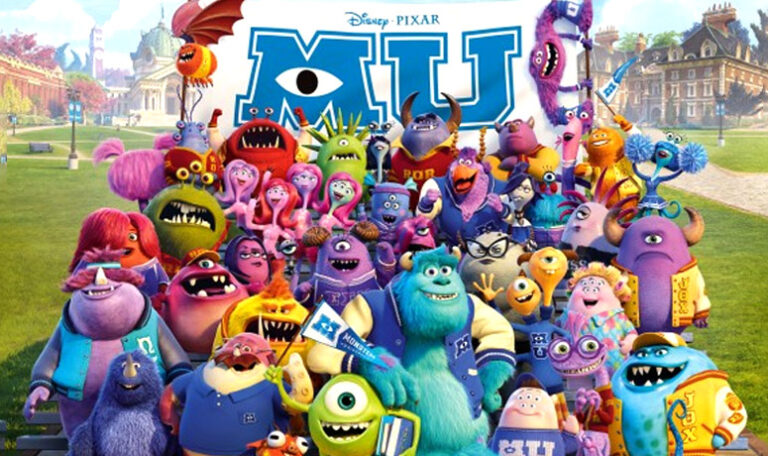
Chapter 10 – Broadening Our Vision
This third section of the book is devoted to some specific methods employed at Pixar to prevent our disparate visions from hindering our collaboration. In each case, we try to force ourselves – individually and as a company – to question our preconceptions. In this chapter, I lay out several of the mechanisms used by us to get our collective heads in a different attitude.
Daily meetings. Daily meetings are part of Pixar’s culture, not only because of what they accomplish – constructive feedback halfway through – but because of how they do it. Participants have learned to leave their egos at the doorway – they are about to show incomplete work to their director and their colleagues. This requires commitment from all levels, and it is the directors’ job to promote and create a safe place for this. Mark Andrews did this at the Valiant meeting by being irrepressible: singing 1980s songs, joking about people’s nicknames, mocking his own ability to draw while hastily scribbling down suggested changes.
Art vs. technology. As John Lasseter often says, “Art challenges technology, and technology inspires art.” It’s not a slogan, but rather our philosophy of integration. When everything is working as it should, art and technology encourage each other. Since the two attitudes can be very different, it can be difficult to keep them aligned and engaged. But as I see it, the effort is always worth it. Our qualifications and our mental models are challenged when we integrate with different people. If we can constantly change and improve our models using technology in the pursuit of art, we will stay current. Pixar’s entire history is a testament to this dynamic interaction.
Chapter 11 – The future undone
Byron Howard, one of our directors at Disney, told me that when he was learning to play guitar a teacher taught him the phrase, “If you think, you stink.” He liked the idea – and to this day it buoys his work as a director. “The goal is to get so comfortable and relaxed with your instrument or process that you get zen with it and let the music flow without thinking,” he said. “I feel the same way when I storyboard. My work is better when I go through the scene, not overthinking or worrying about the perfection of each drawing, but just flowing with the scene and connecting with it – a very instinctive thing.”
Michael Arndt, who wrote Toy Story 3, and I have an ongoing dialogue regarding how he views his work. He compares writing a screenplay to climb a mountain blindfolded. “The first trick,” he likes to say, “is to find the mountain. In other words, you need to feel your way, letting the mountain reveal itself to you. According to him, climbing a mountain doesn’t necessarily mean going up. Sometimes you go up for a while and then you are forced down a crevasse before going back up. And there is no way of knowing beforehand where the crevices will be.
PART IV – TESTING WHAT WE KNOW
Chapter 12 – A New Challenge
In January 2006, the deal between Pixar and Disney was closed. But the acquisition of Pixar Animation Studios by the Walt Disney Company for $7.5 billion was not a typical merger. Steve had made sure of that. He proposed that John and I take care of Pixar as well as Disney Animation – I would be president and John, chief creative director – because he thought, and Bob agreed, that if the leadership of the studios was separated, unhealthy competition would arise that would ultimately hurt both. (Frankly, he also thought that as trustees of the two entities, we would ensure that Pixar’s traditions were not overtaken by the traditions of Disney, a much larger corporation.)
At the same time, on the Pixar side, there was great concern that the Disney bureaucracy might inadvertently destroy what we had built. Thus, both sides felt at considerable risk. However, the result was that at the heart of that merger was an understanding that both companies needed to trust each other. Each side felt a personal obligation to fulfill the agreement – and I think that was the ideal way to start our relationship.
We decided from the beginning that Pixar and Disney Animation should remain completely separate entities. That meant that neither would perform any production work for the other, no matter how pressing the deadlines or how dire the situation. No exceptions. Why? Because mixing the two boards would be a bureaucratic nightmare. But there was also an overarching managerial principle at work. In short, we wanted each studio to know that it could solve its own problems on its own.
Chapter 13 – Day of Observations
There is nothing like a crisis to bring to the surface what is troubling a company. And then three crises came at once: (1) our production costs were rising and we needed to control them; (2) external economic forces were pressuring our business; and (3) one of the central tenets of our culture – good ideas can come from all sides; so everyone should feel free to speak up – was stumbling. Too many employees – and to me, that means everyone – were self-censoring. That needed to change.
Those three challenges – and our belief that there was no single great idea that would solve them – led us to try something that we hoped would break the deadlock and reinvigorate the studio. We called it Observation Day, and I see it as a great example of how to set the stage for creativity.
Managers of creative enterprises should never forget to ask themselves, “How can we utilize the intelligence of our people?” From its creation to execution, from the goodwill it generated to the changes it brought about throughout the company, Observation Day was a success, in part because it was based on the idea that fixing things is an ongoing, incremental process. Creative people need to accept that challenges never cease, failure cannot be avoided, and “vision” is often an illusion. But they must also always feel safe to say what they think. Observations Day was a reminder that collaboration, determination, and sincerity never fail to stimulate us.
Fact Sheet:
Title: Creativity, Inc.: Overcoming the unseen forces that stand in the way of true inspiration
Authors: Ed Catmull and Amy Wallace
Review: Rogério H Jönck
![[Experience Club] US [Experience Club] US](https://experienceclubus.com/wp-content/uploads/2021/03/laksdh.png)










![[Experience Club] US [Experience Club] US](https://experienceclubus.com/wp-content/uploads/2021/03/logos_EXP_US-3.png)


